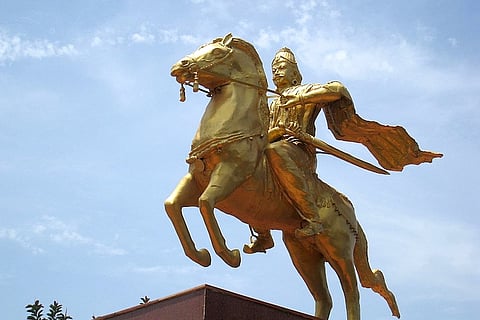

India is not a post-caste society yet. This means casteism is alive and impacts everyday life of Indians today. Therefore, a no-holds-barred critical examination of it is desperately needed if one cares for casteless humanism. Some historians and anthropologists have shown that colonists begin to subcontinentalise the caste-structure through Brahminism from roughly around the middle of the 18th century, when the category “Hinduism” was not even there. But such a view does not tell the whole story about pre-colonial casteism/Brahminism.
Ironically, but not surprisingly, this partial interpretation is popular among some distinguished postcolonial scholars and privileged caste groups. However, crucial questions about pre-colonial India, such as who invented caste, and why and how they went about legitimising caste in India, are still overlooked in scholarly and popular discourses. Such a critique of caste is a vital assertion of human agency. Legal judgments have to nourish such public tendencies. And not silence them.
Thankfully, there are other historians (and some Sanskritists) who emphasise that Brahmin-male power proclaimed “caste segregation” in pre-colonial India – and that such a view is dissuaded by post-colonial academic and legal interpretations. While intellectual elucidations are important, these need not undercut spontaneous emergence of critical caste publics against casteism. For, those who are subordinated will speak against caste-power for self-emancipation and collective transformation.
The mythologies and realities of individuals, institutions, and structures which have given life to caste/casteism will always be scrutinised by those who see their culture, religion, and history as casteless. They ethically and rationally point out how caste notions and practices of mythologised religious figures, provincial kings, spatial segregations, and material deprivation are dehumanising.
Like race and gender, caste inequalities are first culturally normativised and then politically naturalised through self-proclamation of the privileged. Critiquing caste power is, therefore, an inevitable element of human agency. In fact, it is scholarly as well as public responsibility to confront casteism, however it is spiritually and politically manufactured.
For instance, how do we interpret the medieval Chola kingdom in the Tamil speaking regions of c. 850-1300. Chola king, Raja Raja Cholan (reign 985-1014) pursued a subcontinental and intercontinental Chola empire which was further perpetuated by his son Rajendra Cholan and grandson Kulothunga Cholan. Scholars concur that Brahminism took unprecedented roots in the Tamil speaking regions through Raja Raja Cholan’s promotion of temple culture through architectural grandeur and extensive establishment of Brahmin-only residential and wealth localities called Brahmadeyam.
Among others, four aspects intersect here:
1) Raja Raja needed Brahmins to legitimize his kingly power;
2) Brahmins concurred to do it to monopolize religious power in grand temples as well as ownership of vast swath of lands in which they did not labour but garnered their free food;
3) This caste-based patriarchal state and religious power depended on normativising and naturalising gender inequality, as was evidenced in the institutionalisation of Devadasi system (in Tamil Tevaradiyar) in Chola temples;
4) Such caste-based temple-empire meant accumulation of agrarian lands and extraction of free labour from those who were branded as untouchable and lower caste groups.
These intersectionalities need careful understanding, not just in scholarly investigation but beyond temple inscriptions.
Those who were pejoratively classified i.e., caste-based oppressed women and men, would interrogate such politically motivated spiritual assumptions of casteism/Brahminism. For they not only dehumanise fellow humans but also continue to exercise power by distorting historical accounts of Indian communities who would have resisted caste.
In such hegemonic histories, caste-based, racialised, and gendered divisions are “god given facts”; not unlike un-uprootable mountains of nature. If such suppositions are legally supported then, for instance, the women who are dedicated and married to the gods would continue to be sexually exploited by self-privileging males of the temple-empire. Since women (as well as transgender and intersex people) are equal humans, they reject mythological claims and fight for their liberation from such bodily and material exploitation. The legal judgments and institutions have finally begun to comprehend such public assertions of women in postcolonial India.
Similarly, the Dasas and Dasis of ancient vernacular regions of India in general, and their descendants, could be the bearers of such countercultural assertions against casteism/Brahminism. If the rulers of medieval Chola imperialism could thrive through Brahminical propaganda, and privileged caste groups have continued to normativise and naturalise caste thereafter, then it is important that scholarly investigations and legal judgments pay attention to struggles against casteism.
Perhaps those Paanarkal (bards) and Parayarkal (those who spoke against caste) in medieval South, and their descendants in postcolonial Tamil regions, are bearers of anti-caste values. They are in need of appreciation for upholding casteless humanism. Their continuing resilience to establish a post-caste society in India needs legal and social recognition, and local and global appreciation.
Gajendran Ayyathurai teaches and researches at CeMIS, Göttingen University, Germany.
Views expressed are the author’s own.